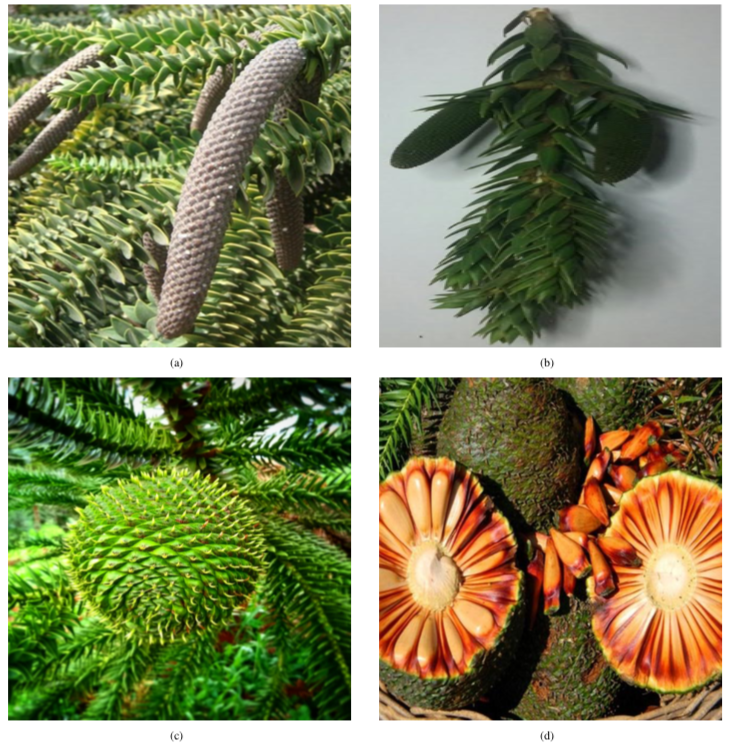The Araucaria Nuclear Magnetic Resonance (ANMR) Database has been built in collaboration with the Laboratory of Nuclear Magnetic Resonance at the Federal University of Parana (UFPR) in Curitiba, Brazil, and it is available for research purposes.
The samples were collected during the flowering season (July 2015). Their gender were visually determined by a botanical expert, who was able to identify flowers in females and strobiles in males (Figure below). From 76 used plants, 35 were males (label 1) while 41 were females (label 2).

The needles were macerated with liquid nitrogen and extracted with deuterated chloroform. Several pre-treatments were evaluated. In the best one, Araucaria needles were grounded in liquid nitrogen until a fine powder was obtained. In our analysis, 30.0 mg of needles powder were put in a 2 mL Eppendorf recipient. Hereafter, 600 μL of deute- rated solvent were added. Extracts were taken for 10 minutes under ultrasound assistance. Finally, after a centrifuga- tion process, the liquid faction was put in a 5mm diameter tube.
Analysis concerning to 1H and 13C were carried on in a BRUKER Avance III, 500 MHz and 600 MHz for 1H NMR spectra, and 125 MHz for 13C NMR spectra. Bruker’s Qua- druple (QXI) Resonance Probes were used in the spectra acquisition, as well as a set of parameters, relaxation delay of a second, receiver gain of 145.6, spectral window of 30 ppm, 256 scans and 900-pulse sequence zg (zero-go).
Spectra processing applied softwares Bruker’s TopSpin 3.1 and Amix? v. 3.9.14. By using the first one, baseline was automatically adjusted with a “absn” function. A ma- nual phase correction was performed. Taking tetramethyl- silane (TMS) as reference, spectra were calibrated to zero. While performing the acquisition, spectra were smoothed by a function in which the factor “lb” was set to 0.3. The Amix? v. 3.9.14 software was used to define rectangular buckets.
Taking the original spectra, we analysed different buckets’ width while looking for a perspective which could im- prove the recognition rates. The best results were produced by individuals with a set of 260 buckets extracted from the 3,189 original attributes. After a reduction of more than 12 times, each bucket was taken as an attribute and each indi- vidual was represented by a set of only 260 from attributes.
Download
The ANMR Database may be used for non-commercial research provided you acknowledge the source of the image by citing the following paper in publications about your research:
Martins, J., Oliveira, L. S., Weingaertner, D., Barison, A., Oliveira, G., Lião, L., A Database for Automatic Classification of Gender in Araucaria Angustifolia plants, Soft Computing, 2021
Link to download: anmr.txt
